- 2013-12-14
Jared Males
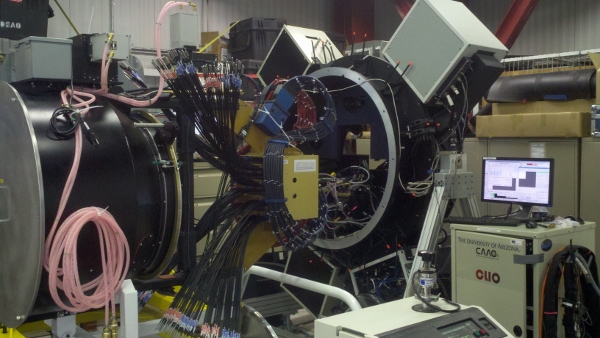
This keeps happening to me. Last time it was Harvard. Today the Arizona Wildcats went to Ann Arbor to play the Michigan Wolverines in men’s basketball. So of course, there was a Michigan instrument parked right next to the MagAO NAS in the Aux Building. In this picture you can see ...
- 2013-12-14
Jared Males

MagAO is back at LCO, or, well, at least I am to do some maintenance. We have a bunch of improvements to make, and a few bugs to sort out too, and we don’t want to save them until a few days before our next run.
Before I get to the wildlife, did ...
- 2013-12-10
Vanessa Bailey
Vanessa and Tiffany are doing an AMA on reddit, so get your questions ready! You can find it here. Leave your questions for us – we’ll check back Wednesday at 12 noon EST.
- 2013-12-05
Jared Males
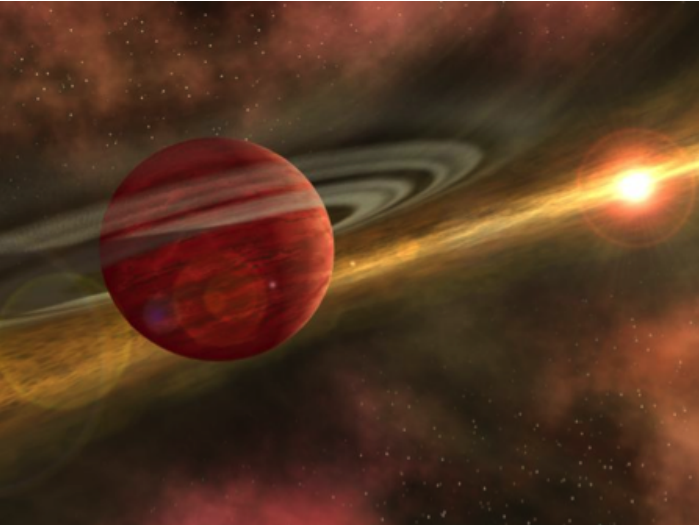
Today, Vanessa and the rest of the MagAO team announced the discovery of a new planet, named HD 106906 b. Read on for the exciting details.
You can find the original press release at UA News, and read more at: Discovery News, NBC News, Science Daily, Phys.org, ScienceBlog, Nature World News, CBS News, the LA Times, ...
- 2013-12-05
Jared Males
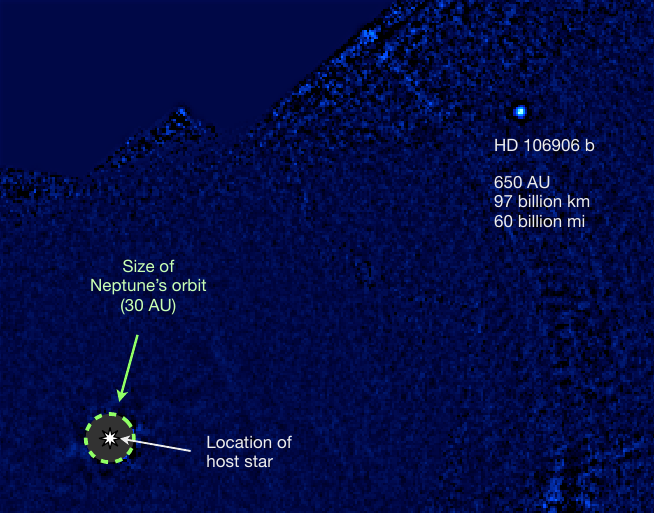
We report the discovery of a planetary-mass companion, HD 106906 b, with the new Magellan Adaptive Optics (MagAO) + Clio2 system. The companion is detected with Clio2 in three bands: J, KS, and L′, and lies at a projected separation of 7.1” (650 AU). It is confirmed to be comoving with its 13±2 Myr-old F5 ...
- 2013-09-19
Katie Morzinski
MagAO with its visible camera VisAO (r’,i’,z’,Ys) and IR camera Clio2 (J, H, and optimized Ks, L’, M’) science cameras will be open for use by the Magellan community in 2014A. For target planning purposes the system will likely be available for a ~3 week run in the March-May 2014 time frame (although final dates ...
- 2013-08-27
Katie Morzinski
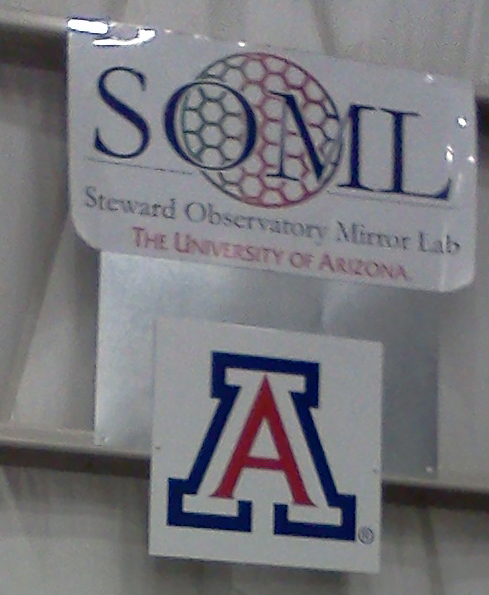
MagAO and VisAO got a lot of press last week, when we announced our first-light results — demonstrating diffraction-limited imaging with 0.02 arcsecond resolution. This is the finest resolution of any filled-aperture long-exposure images ever taken! See the press release here.
But did we ever tell you where the Magellan telescope primary mirrors come from?
They ...
- 2013-08-21
Jared Males

Today the MagAO team is extremely happy to announce our first three refereed publications. Read on to find out about the exciting science we did in the Orion nebula.
The following press release can be downloaded as a pdf.
For a little more insight into the project see this Arizona Daily Star article. For Carnegie’s take go ...
- 2013-08-21
Jared Males

We utilized the new high-order (250-378 mode) Magellan Adaptive Optics system
(MagAO) to obtain very high spatial resolution observations in “visible light”
with MagAO’s VisAO CCD camera. In the good-median seeing conditions of Magellan
(0.5-0.7″) we find MagAO delivers individual short exposure images as good as
19 mas optical resolution. Due to telescope vibrations, long exposure (60s) r’
(0.63 micron) ...
- 2013-08-21
Jared Males
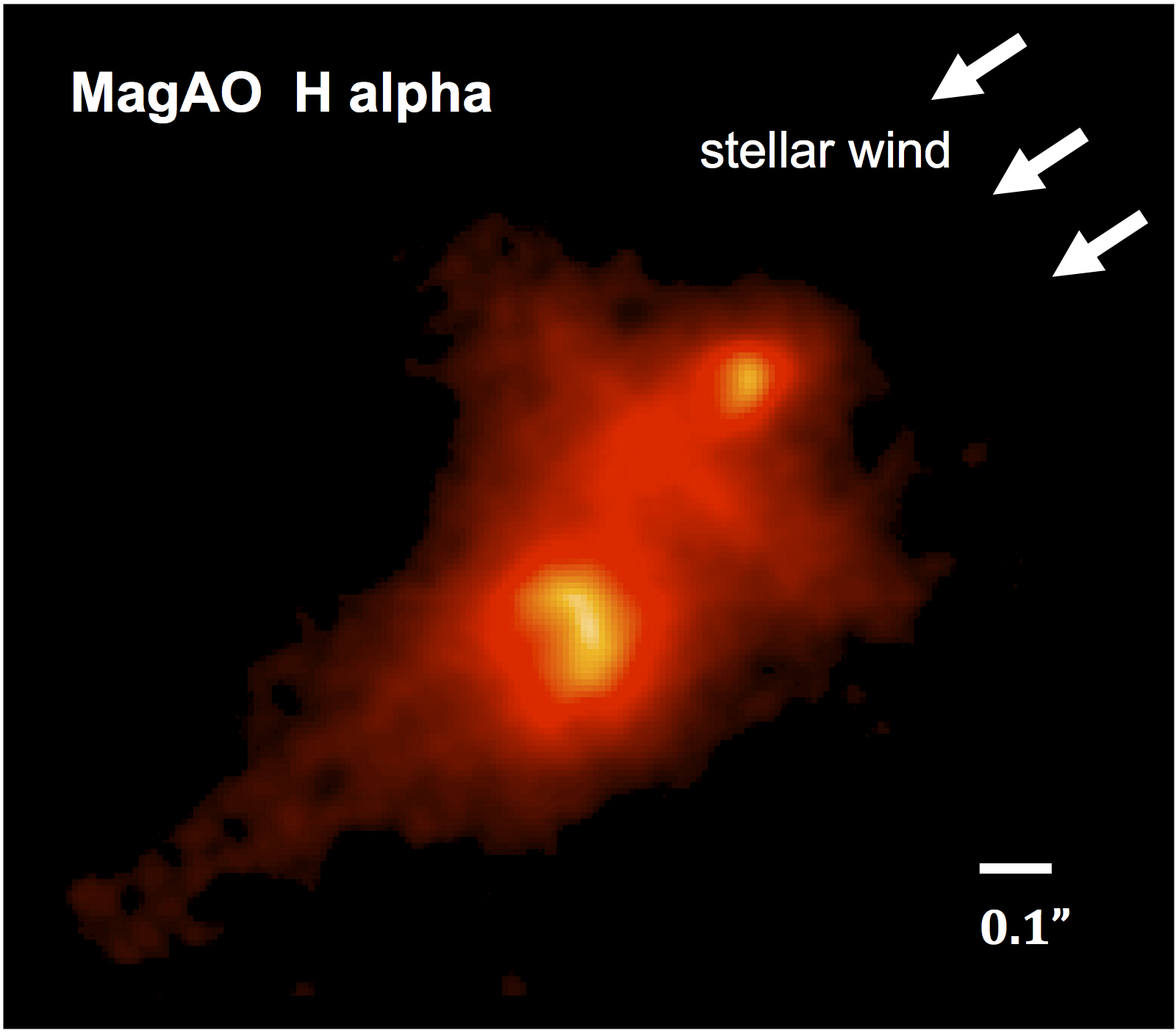
Disks of gas and dust around newly born stars, dubbed protoplanetary disks (proplyds), are believed to evolve into planetary systems. Understanding how these disks are affected by strong light/wind from nearby massive stars is crucial to theories of planet formation and evolution. We used MagAO to image the binary proplyd (called LV 1) in the ...
 This keeps happening to me. Last time it was Harvard. Today the Arizona Wildcats went to Ann Arbor to play the Michigan Wolverines in men’s basketball. So of course, there was a Michigan instrument parked right next to the MagAO NAS in the Aux Building. In this picture you can see ...
This keeps happening to me. Last time it was Harvard. Today the Arizona Wildcats went to Ann Arbor to play the Michigan Wolverines in men’s basketball. So of course, there was a Michigan instrument parked right next to the MagAO NAS in the Aux Building. In this picture you can see ... MagAO is back at LCO, or, well, at least I am to do some maintenance. We have a bunch of improvements to make, and a few bugs to sort out too, and we don’t want to save them until a few days before our next run. Before I get to the wildlife, did ...
MagAO is back at LCO, or, well, at least I am to do some maintenance. We have a bunch of improvements to make, and a few bugs to sort out too, and we don’t want to save them until a few days before our next run. Before I get to the wildlife, did ... Today, Vanessa and the rest of the MagAO team announced the discovery of a new planet, named HD 106906 b. Read on for the exciting details. You can find the original press release at UA News, and read more at: Discovery News, NBC News, Science Daily, Phys.org, ScienceBlog, Nature World News, CBS News, the LA Times, ...
Today, Vanessa and the rest of the MagAO team announced the discovery of a new planet, named HD 106906 b. Read on for the exciting details. You can find the original press release at UA News, and read more at: Discovery News, NBC News, Science Daily, Phys.org, ScienceBlog, Nature World News, CBS News, the LA Times, ... We report the discovery of a planetary-mass companion, HD 106906 b, with the new Magellan Adaptive Optics (MagAO) + Clio2 system. The companion is detected with Clio2 in three bands: J, KS, and L′, and lies at a projected separation of 7.1” (650 AU). It is confirmed to be comoving with its 13±2 Myr-old F5 ...
We report the discovery of a planetary-mass companion, HD 106906 b, with the new Magellan Adaptive Optics (MagAO) + Clio2 system. The companion is detected with Clio2 in three bands: J, KS, and L′, and lies at a projected separation of 7.1” (650 AU). It is confirmed to be comoving with its 13±2 Myr-old F5 ... MagAO and VisAO got a lot of press last week, when we announced our first-light results — demonstrating diffraction-limited imaging with 0.02 arcsecond resolution. This is the finest resolution of any filled-aperture long-exposure images ever taken! See the press release here. But did we ever tell you where the Magellan telescope primary mirrors come from? They ...
MagAO and VisAO got a lot of press last week, when we announced our first-light results — demonstrating diffraction-limited imaging with 0.02 arcsecond resolution. This is the finest resolution of any filled-aperture long-exposure images ever taken! See the press release here. But did we ever tell you where the Magellan telescope primary mirrors come from? They ... Today the MagAO team is extremely happy to announce our first three refereed publications. Read on to find out about the exciting science we did in the Orion nebula. The following press release can be downloaded as a pdf. For a little more insight into the project see this Arizona Daily Star article. For Carnegie’s take go ...
Today the MagAO team is extremely happy to announce our first three refereed publications. Read on to find out about the exciting science we did in the Orion nebula. The following press release can be downloaded as a pdf. For a little more insight into the project see this Arizona Daily Star article. For Carnegie’s take go ... We utilized the new high-order (250-378 mode) Magellan Adaptive Optics system (MagAO) to obtain very high spatial resolution observations in “visible light” with MagAO’s VisAO CCD camera. In the good-median seeing conditions of Magellan (0.5-0.7″) we find MagAO delivers individual short exposure images as good as 19 mas optical resolution. Due to telescope vibrations, long exposure (60s) r’ (0.63 micron) ...
We utilized the new high-order (250-378 mode) Magellan Adaptive Optics system (MagAO) to obtain very high spatial resolution observations in “visible light” with MagAO’s VisAO CCD camera. In the good-median seeing conditions of Magellan (0.5-0.7″) we find MagAO delivers individual short exposure images as good as 19 mas optical resolution. Due to telescope vibrations, long exposure (60s) r’ (0.63 micron) ... Disks of gas and dust around newly born stars, dubbed protoplanetary disks (proplyds), are believed to evolve into planetary systems. Understanding how these disks are affected by strong light/wind from nearby massive stars is crucial to theories of planet formation and evolution. We used MagAO to image the binary proplyd (called LV 1) in the ...
Disks of gas and dust around newly born stars, dubbed protoplanetary disks (proplyds), are believed to evolve into planetary systems. Understanding how these disks are affected by strong light/wind from nearby massive stars is crucial to theories of planet formation and evolution. We used MagAO to image the binary proplyd (called LV 1) in the ...